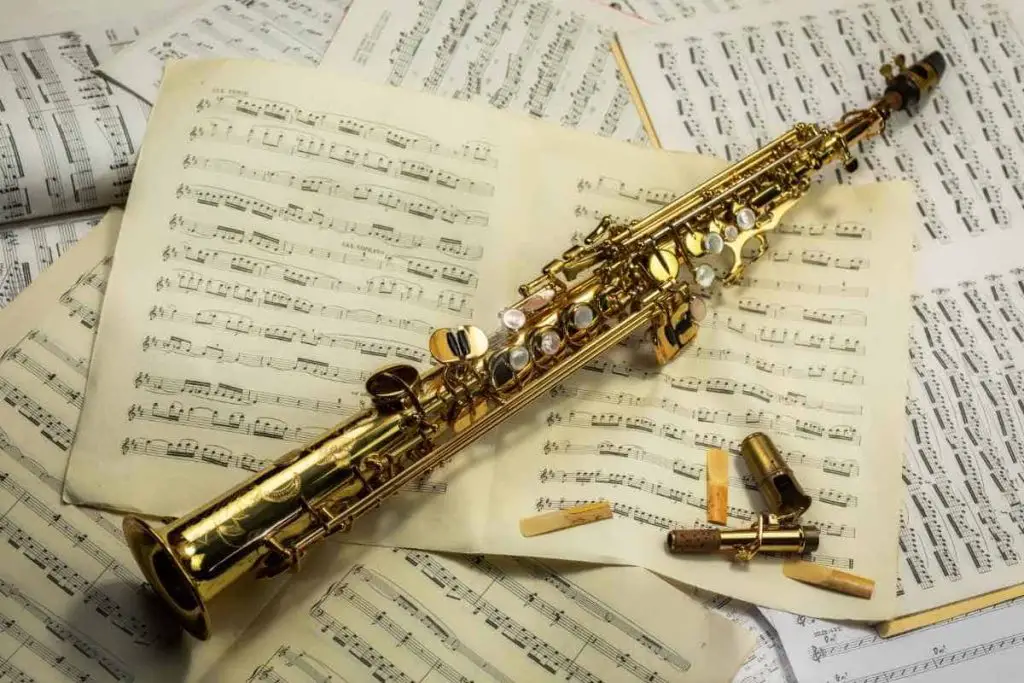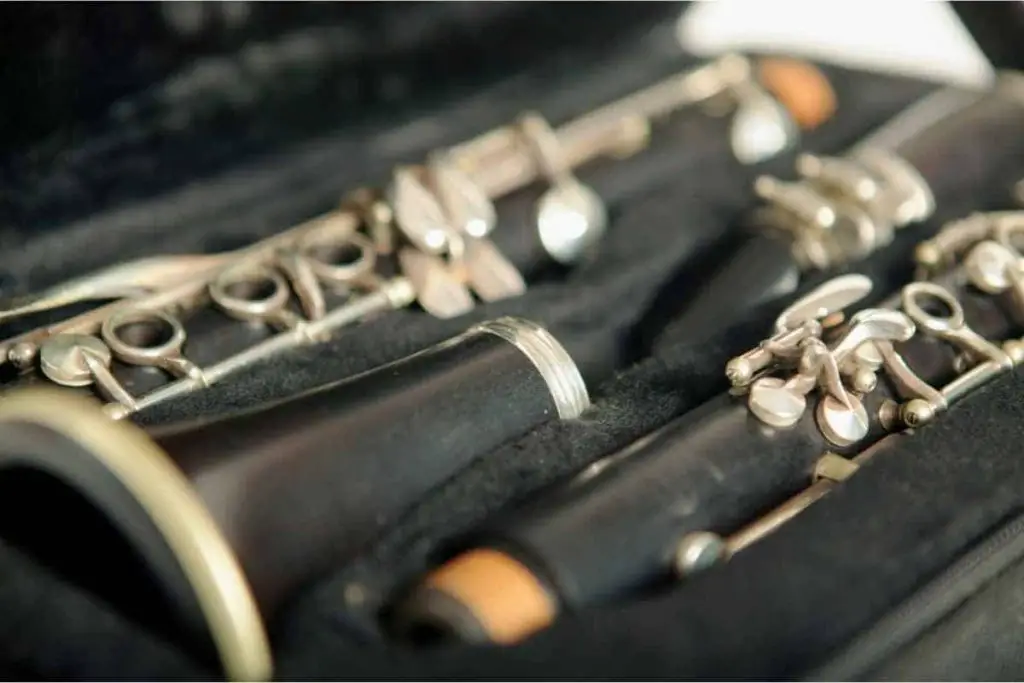When beginning instrumentalists see the clarinet and the soprano saxophone, they may assume that the instruments are quite similar due to their shape and size.
However, there are many differences to account for. If you are interested in playing one of these instruments, you may need a breakdown of what they have in common and what sets them apart.
This article will help you make a decision regarding whether to learn the clarinet or the soprano saxophone, going over the particulars of each instrument and guiding you in your decision process.
Table of Contents
The Main Differences Between Soprano Sax and Clarinet
The clarinet is a much more popular instrument for beginners than the soprano saxophone because it is easier to learn, cheaper and can be used in more styles of music. The soprano saxophone does have more simple fingerings than a clarinet and is easier to assemble, but it is the most difficult saxophone to play in tune.
Which Instrument is Easier to Learn?

While it may seem that it would be simple to switch back and forth between the instruments, they have some important points that differ greatly.
Do They Have the Same Fingerings?
The primary difference between soprano saxophone and clarinet fingerings is that the saxophone has an octave key while the clarinet has a register key.
The octave key raises the played tone by one octave, meaning that the fingerings for each octave are the same, while the register key raises the tone by an octave and a fifth (from C to G, for example).
As a result, it is slightly harder to learn clarinet fingerings compared to the soprano sax.
Which Instrument Makes it Easier to Achieve a Good Sound?
In general, the soprano sax is considered to be more difficult than the clarinet when it comes to achieving the proper sound.
The soprano saxophone mouthpiece calls for dozens of tiny adjustments to your embouchure as you play.
It is challenging to obtain the muscle memory needed to arrange everything correctly.
While the clarinet mouthpiece and the soprano sax mouthpiece are approximately the same sizes, it is easier to find the correct place to put your mouth on the clarinet mouthpiece.
The wide-tipped nature of the soprano saxophone mouthpiece means that it is hard to achieve an even sound over the range of the instrument. The clarinet’s narrower mouthpiece allows for better control.
What are the Instruments’ Ranges?
The Bb clarinet and soprano saxophone are very similar in the range of notes they can play, but the Bb clarinet is slightly lower in pitch.
Do They Play in Different Keys?
Both instruments are pitched in Bb, meaning that they sound the same concert pitch note when the same written note is played.
However, as I’ve talked about in another article, the soprano saxophone is tuned in a different key than alto and baritone saxophones.
What is the Range of Each Instrument?
The Bb clarinet can go from its lowest note of concert D3 up to its highest note at Bb6 above the treble clef staff.
The soprano saxophone’s lowest note is an Ab3 in concert pitch and its highest note is an E6.
Size and Construction
The instruments are roughly equivalent in size. The straight soprano saxophone is 27.5 inches long while the Bb clarinet is 26 inches long.
Both instruments are small and light enough to pack and carry fairly easily.
The curved soprano saxophone is about 18 inches long since its bell is turned up in a similar fashion as an alto saxophone.
Which is Easier to Assemble?

Saxophones are easier to assemble than clarinets. The straight soprano saxophone comes in only two parts: the mouthpiece and the body.
The curved soprano saxophone sometimes has a detachable neck in addition to the mouthpiece and body.
The clarinet comes apart into five pieces: the mouthpiece, barrel, upper and lower joints, and bell.
The parts must be lined up with precision in order to allow the mechanics of the instrument to work properly.
If you are inexperienced, it is easy to put a clarinet together wrong and damage the keys. If this happens, you will need to take your instrument in for repairs.
It is better to have someone show you how to do it right before you make any mistakes.
Can Either Instrument Be Self-Taught?
It is possible to learn the clarinet or the soprano saxophone on your own, but you may train yourself into bad habits.
A proper teacher would be able to nip these habits in the bud before they become persistent and interfere with your ability to play advanced music.
If you do decide to go it alone, find a friend or teacher who can meet with you quickly and go over how to care for and assemble the instrument, how you should breathe and hold your embouchure, and the basics of tone production.
What is the Startup Cost for Each Instrument?
On the whole, the soprano sax costs more than the Bb clarinet. Expect to pay around $1,000 to $1,500 for a student-grade soprano saxophone and $700 to $1,200 for a student-grade clarinet.
Many adult beginners choose to skip over the student-grade models and go straight for the intermediate models.
An intermediate soprano saxophone costs about $1,500 to $3,000 and an intermediate clarinet (usually constructed of wood) runs about $1,000 to $1,250.
As a general rule when dealing with wind instruments like the clarinet and saxophone, do not buy the lowest-priced instrument you can find.
Stick to established, quality brands like Yamaha, Buffet, P. Mauriat, Selmer, and Yanagisawa.
If you buy a quality brand, you will preserve your instrument’s resale value just in case you do not want to continue playing or in case you want to trade up to a more advanced model.
If you cannot find an affordable instrument sold new, you may want to check out used instruments that are still in playable condition.
Read More: Soprano Saxophone Cost Guide
Maintenance and Supplies
No matter which instrument you choose, you will need to commit to having the instrument serviced by a professional repair person every few years.
Both clarinets and saxophones have delicate mechanical parts as well as replaceable items like corks and pads that periodically wear out.
You will need to buy reeds regularly. Many players choose plastic reeds because they are more durable and have a more consistent sound than cane reeds.
How Much do Lessons Cost?
Lessons for clarinet or soprano sax should cost about the same. For a professional teacher, you should expect to pay about $50 per hour.
You may be able to find a high school teacher or even a more experienced student who can teach you the basics for a lower price.
Which is More Popular: Clarinet vs Soprano Saxophone?
The clarinet is significantly more popular than the soprano saxophone. Most saxophonists begin on the alto saxophone and then transition to the range of their choice, from soprano down to baritone.
It is rare that beginners choose the soprano sax since it is the most difficult instrument in its family.
Tips on How to Choose Between the Clarinet and Soprano Saxophone
Musical Style
The first tip that I would offer is to think about the type of music that you want to play.
Soprano saxophones can play in bands or wind ensembles as well as jazz groups.
Modern band literature contains many good parts for the soprano saxophone, as does jazz music. However, soprano sax does not always appear in all jazz music.
If you are more interested in classical music than jazz, the clarinet might be the right choice for you!
Clarinet parts started in Mozart’s era and continue to the present day. There are great opportunities to play in both orchestras and wind ensembles if you play the clarinet.
Cost
For most players, the startup cost is a factor. Saxophones are more expensive on the whole, though some clarinets can also cause sticker shock particularly if they are custom-built and made of fine wood.
The Verdict: Should You Start with Clarinet or Soprano Sax?
If you are an adult beginner, I believe that it would be best to start on the clarinet.
If you want to turn the saxophone into a lifelong hobby, I would recommend buying an alto saxophone instead because it is much easier to learn at first.
The clarinet costs less than the saxophone and it is more versatile when it comes to musical styles.
If you are set on playing the soprano saxophone, remember that you will have a longer learning curve than with the alto saxophone or Bb clarinet.
You will need to be patient with yourself on soprano sax as you learn how to make a beautiful sound.
Playing an instrument of any kind will enrich your life! I have played the clarinet since elementary school, adding the saxophone in high school.
I truly enjoy both instruments, and it is not overly difficult to switch between them once you have learned both.
If you have the time and the determination, you can play either the soprano saxophone or the clarinet well and make a lifelong hobby of it.
Sources
https://saxschoolonline.com/articles/why-learning-soprano-saxophone-is-hard/